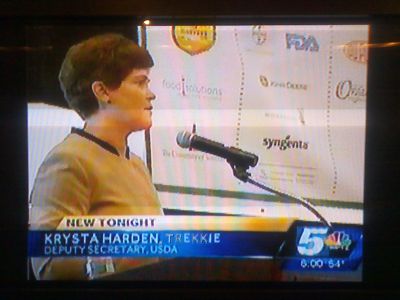Mr. Obama says the country is doing better. I guess if he says it, it must be true.
“Can you sell that?” Steve Kroft asked on 60 Minutes.
Good question.
Mr. Obama says he doesn’t have to sell it because the data proves it.
Yeppers. Here’s the data:
- Median household income fell again.
- 46.5 million people now live in poverty.
- Oh, yeah. And the national debt approaches $17.76 trillion.
Remember Little Mikey?
Mikey was the young boy in a television commercial for the breakfast cereal, Life. The popular commercial first aired in 1972 and stayed on the air for more than twelve years, ending up as one of the longest continuously running commercial campaigns ever aired.
Little Mikey would eat anything.
Quaker Oats ran the commercial to change kids’ perception that something they thought would be bad would taste good. Mikey liked it.
Let’s look at the data that proves we’re doing better.
Median household income fell again, but only slightly in a change the Census Bureau does not consider statistically significant.
Heh. I have a statistically insignificant smaller number of bucks in my wallet but everything I bought last week cost more than the week before. Yeppers, I’m doing better. The data proves it.
Of course, Mr. Obama’s federal government also says the US inflation rate is low, something anyone who has shopped for ground beef (up from to $1.99/pound six years ago to $4.79/pound today), or home heating oil ($2.21/gallon on January 16, 2009, $2.56 by that November, and $3.869/gallon today), chocolate chips (on sale at 99 cents in 2008 but $2.50 today), or a basic Internet connection (I paid !@#$%^Comcast $41.81/month for spotty Internet service six years ago and $61.14/month for it this month) might question. Could it be that the Consumer Price Index doesn’t track what real consumers “pay at the pump”?
46.5 million — that’s one out of every seven people in the USA — now live in poverty. That’s also the largest number in the 54 years the Census has measured poverty. (Worthy of note is the fact that the percentage of people in poverty has declined as the actual number has risen because the overall population has also climbed.) Yeppers, they’re doing better. The data proves it.
Oh, yeah. And the national debt to pay for social programs to eliminate poverty and other stuff is about $17.76 Trillion (the national debt stood at about $10.7 Trillion on this date in 2008). Yeppers, we’re all doing better. The data proves it.
There’s plenty more. The NYTimes reports today on ER costs skyrocketing in spite of Obamacare. The San Francisco Chronicle reports today that ATM fees keep climbing despite government banking watchdogs. The Chicago Tribune reports today that Americans are stepping up spending, but the home market is weakening, despite federal programs. Doing better.
The True Believers like it.
“Can you sell that?” Steve Kroft asked.
Of course he can. He can sell it to Mikey. Mikey will eat anything! The data proves it.


 When Nurse Nancy said she would call me, I reiterated that she could leave a detailed message on my voicemail. See, I know that Health Insurance Portability and Accountability Act requires privacy so you have to fill out a form in quintuplicate and seal it with the blood of a goat to allow a doc to leave you a message.
When Nurse Nancy said she would call me, I reiterated that she could leave a detailed message on my voicemail. See, I know that Health Insurance Portability and Accountability Act requires privacy so you have to fill out a form in quintuplicate and seal it with the blood of a goat to allow a doc to leave you a message.
 Stop it, Harper! This isn’t the Story of O. This is the story of Dick the Tool Guy.
Stop it, Harper! This isn’t the Story of O. This is the story of Dick the Tool Guy.